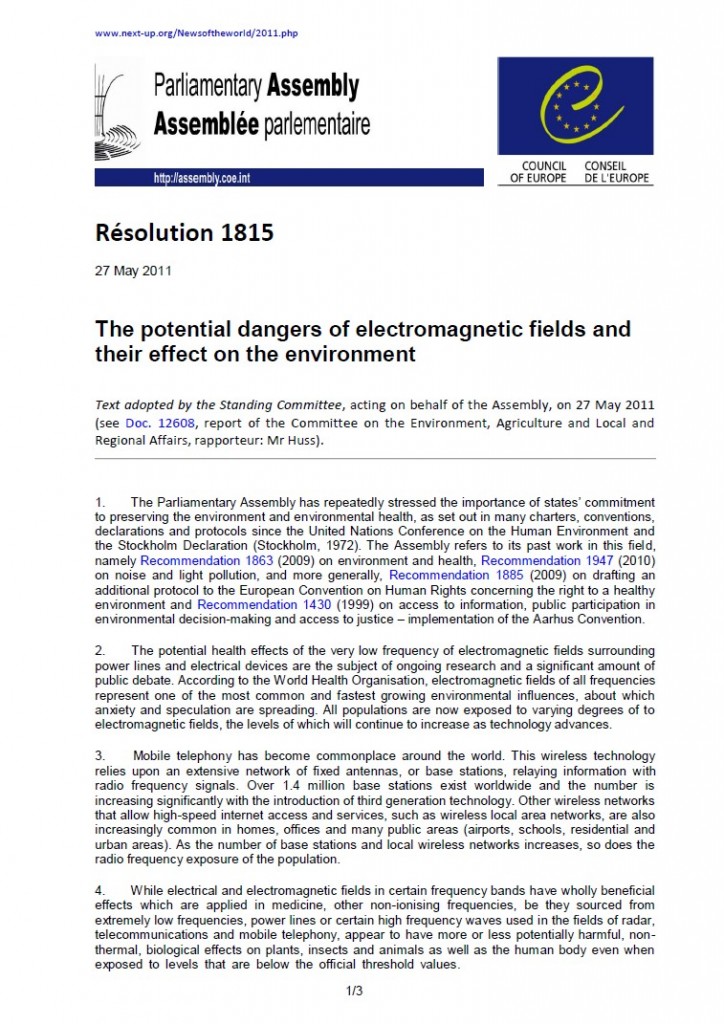Portada del sitio > Estudios Científicos > Radiofrequency electromagnetic fields; male infertility and sex ratio of (...)
Eur J Epidemiol. 2008 Apr 16

Radiofrequency electromagnetic fields; male infertility and sex ratio of offspring.
Lunes 28 de abril de 2008 · 1709 lecturas
Radiofrequency electromagnetic fields; male infertility and sex ratio of offspring.
Baste V, Riise T, Moen BE.
Department of Public Health and Primary Health Care, Section for Occupational Medicine, UNIFOB AS, University of Bergen, Kalfarveien 31, 5018, Bergen, Norway, valborg.baste@isf.uib.no.
Concern is growing about exposure to electromagnetic fields and male reproductive health. The authors performed a cross-sectional study among military men employed in the Royal Norwegian Navy, including information about work close to equipment emitting radiofrequency electromagnetic fields, one-year infertility, children and sex of the offspring. Among 10,497 respondents, 22% had worked close to high-frequency aerials to a "high" or "very high" degree. Infertility increased significantly along with increasing self-reported exposure to radiofrequency electromagnetic fields. In a logistic regression, odds ratio (OR) for infertility among those who had worked closer than 10 m from high-frequency aerials to a "very high" degree relative to those who reported no work near high-frequency aerials was 1.86 (95% confidence interval (CI): 1.46-2.37), adjusted for age, smoking habits, alcohol consumption and exposure to organic solvents, welding and lead. Similar adjusted OR for those exposed to a "high", "some" and "low" degree were 1.93 (95% CI: 1.55-2.40), 1.52 (95% CI: 1.25-1.84), and 1.39 (95% CI: 1.15-1.68), respectively. In all age groups there were significant linear trends with higher prevalence of involuntary childlessness with higher self-reported exposure to radiofrequency fields. However, the degree of exposure to radiofrequency radiation and the number of children were not associated. For self-reported exposure both to high-frequency aerials and communication equipment there were significant linear trends with lower ratio of boys to girls at birth when the father reported a higher degree of radiofrequency electromagnetic exposure.
Ver el abstract original AQUÍ







